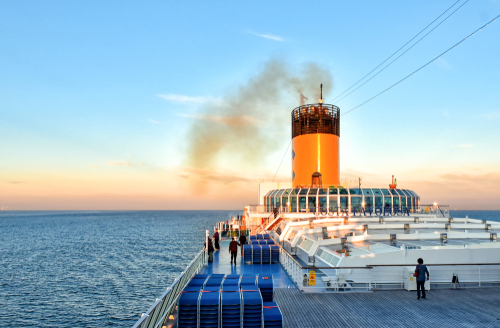A total of 23 governments responsible for over 90% of global public investment in clean energy innovation have committed to greater action to make clean energy affordable to all by 2030 and accelerate net zero pathways, as part of Mission Innovation 2.0 initiative.
Mission Innovation 2.0 is the second phase of the global Mission Innovation initiative, launched alongside the Paris Agreement at the 2015 COP21 conference, and includes the plans on a new Zero-Emission Shipping Mission, announced earlier this week by the Global Maritime Forum in collaboration with Denmark, Norway and the US along with the Mærsk Mc-Kinney Møller Center for Zero Carbon Shipping.
Mission Innovation is playing a crucial role in accelerating solutions to address climate disruption. We must cut global emissions by 45% by 2030 from 2010 levels and achieve net zero emissions by 2050 and to do that, we must act fast. Every sector and every industry must have an action plan with robust intermediate goals. With less than six months to COP26, I welcome the commitments from governments and the private sector today that will help us achieve our shared objectives,
…noted António Guterres, Secretary-General of the United Nations.
[smlsubform prepend=”GET THE SAFETY4SEA IN YOUR INBOX!” showname=false emailtxt=”” emailholder=”Enter your email address” showsubmit=true submittxt=”Submit” jsthanks=false thankyou=”Thank you for subscribing to our mailing list”]
Among others, Mission Innovation 2.0 aims to catalyze public-private action and investment through sector-specific Missions that accelerate the development of clean energy solutions in critical areas, to reach tipping points this decade in their affordability, in line with Paris Agreement which seeks to limit global warming to well below 2 degrees Celsius, compared to pre-industrial levels. The goal is to make them attractive and accessible to all countries and give governments worldwide the confidence to set ambitious clean energy pathways.
As many governments and businesses around the world continue to commit to ambitious climate goals and to reach net zero emissions, the need for innovation has never been greater or more urgent. To achieve the Paris Agreement, all sectors of the economy need access to cost competitive clean energy solutions this decade,
…reads a Joint Statement by Energy, Research and Science Ministers representing 22 countries and the European Commission on the launch of Mission Innovation 2.0.
In the joint statement issued on 31st May, the leaders committed that Mission Innovation will:
- Be an action-oriented forum for government leaders to pioneer clean energy solutions through domestic innovation action and international cooperation. Members will capitalize on collective expertise, capability and interests to accelerate the development of innovative solutions.
- Catalyze global action through public-private Missions that set ambitious and inspirational innovation goals that can lead to tipping points in the cost, performance or scale of clean energy solutions, leading to more rapid technology adoption.
- Build confidence in clean energy solutions through an Innovation Platform by analyzing global innovation progress and facilitating knowledge-sharing and collaboration to support all countries in planning ambitious clean energy transitions.
- Develop pathways to deployment by actively working in partnership with the private and financial sectors and other initiatives to boost demand for new solutions, and to explore ground-breaking opportunities for public-private investment.
The launch of Mission Innovation 2.0 is an important step forward to reach our collective climate goals. Reaching net-zero emissions by 2050 will require urgent action by 2030, both to deploy the clean energy technologies we already have as well as to develop, demonstrate, and scale the innovations we’ll need to fully decarbonize the global economy,
…said John Kerry, U.S. Special Presidential Envoy for Climate.
Since 2015, Mission Innovation member governments have increased clean energy innovation investments by a cumulative total of USD$18bn. Investment is now USD$5.8bn per year higher than in 2015. Canada, Chile, Finland, Japan, the Netherlands, Norway, the Republic of Korea and the UK have doubled their levels of investment and Denmark, Germany, Sweden and the European Commission have increased investment by 75% or more against their 2015 baselines.
Mission Innovation 2.0
As part of Mission Innovation 2.0, a series of new Missions will accelerate the frontiers of innovation and drive down the cost of technologies by driving public-private action in areas critical to global clean energy transitions, starting with power systems, clean hydrogen, and shipping. Each Mission is led by a coalition of countries and brings together governments and the private sector to focus innovation efforts:
- Green Powered Future – led by China, Italy and the UK – aims to demonstrate that, by 2030, power systems in different geographies and climates will be able to effectively integrate up to 100% variable renewable energy, such as wind and solar, in their generation mix and maintain a cost-efficient, secure and resilient system.
- Clean Hydrogen – led by Australia, Chile, the UK, the US, and European Union – aims to make clean hydrogen[iv] cost competitive to the end-user by reducing end-to-end costs to USD $2 per kilogram by 2030. The Mission will increase research and development in hydrogen technologies and deliver at least 100 hydrogen valleys across production, storage and end use of hydrogen worldwide.
- Zero-Emissions Shipping – led by Denmark, the US and Norway, together with the Global Maritime Forum and the Maersk McKinney Moller Center for Zero Carbon Shipping – aims for ships capable of running on zero-emission fuels (such as green hydrogen, ammonia and methanol) to make up at least 5% of the global deep-sea fleet by 2030.
- Innovation Platform – will build global confidence in emerging clean energy solutions by tracking innovation progress, enhancing knowledge exchange and collaboration and working with investors, innovators and end-users to accelerate technologies to market.

Today, as many governments and businesses around the world commit to ambitious climate goals and reaching net zero emissions, the need for innovation has never been greater or more urgent. Cost-effective, clean energy solutions must become a reality for everyone. By transforming how we generate, use, and distribute energy, we can drive investment, create jobs, and secure a cleaner planet for future generations,
…added Patrick Child, Deputy Director-General, Research and Innovation at the European Commission and Chair of the Mission Innovation Steering Committee.
Earlier in 2021, international energy and climate leaders from more than 40 countries took part in the IEA-COP26 Net Zero Summit to identify how to work together to reduce global greenhouse gas emissions and meet the goals of the Paris Agreement. During the meeting, many IEA member governments supported the Seven Key Principles presented by IEA to guide the implementation of net-zero commitments.
FIND THE JOINT STATEMENT ON MISSION INNOVATION 2.0 LAUNCH HERE
































































